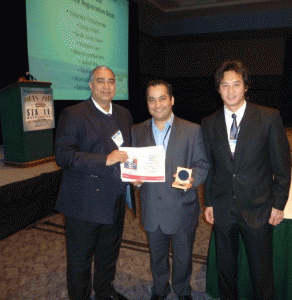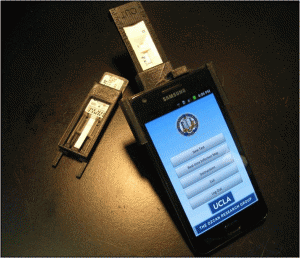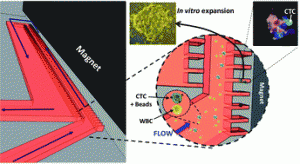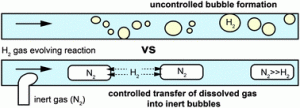This month sees the following articles in Lab on a Chip that are in the top ten most accessed:
Microfluidic diagnostics for the developing world
Xiaole Mao and Tony Jun Huang
Lab Chip, 2012, 12, 1412-1416
DOI: 10.1039/C2LC90022J
Human gut-on-a-chip inhabited by microbial flora that experiences intestinal peristalsis-like motions and flow
Hyun Jung Kim, Dongeun Huh, Geraldine Hamilton and Donald E. Ingber
Lab Chip, 2012, Advance Article
DOI: 10.1039/C2LC40074J
A combined micromagnetic-microfluidic device for rapid capture and culture of rare circulating tumor cells
Joo H. Kang, Silva Krause, Heather Tobin, Akiko Mammoto, Mathumai Kanapathipillai and Donald E. Ingber
Lab Chip, 2012, Advance Article
DOI: 10.1039/C2LC40072C
Commercialization of microfluidic point-of-care diagnostic devices
Curtis D. Chin, Vincent Linder and Samuel K. Sia
Lab Chip, 2012, Advance Article
DOI: 10.1039/C2LC21204H
Engineers are from PDMS-land, Biologists are from Polystyrenia
Erwin Berthier, Edmond W. K. Young and David Beebe
Lab Chip, 2012, 12, 1224-1237
DOI: 10.1039/C2LC20982A
Lab-in-a-tube: ultracompact components for on-chip capture and detection of individual micro-/nanoorganisms
Elliot J. Smith, Wang Xi, Denys Makarov, Ingolf Mönch, Stefan Harazim, Vladimir A. Bolaños Quiñones, Christine K. Schmidt, Yongfeng Mei, Samuel Sanchez and Oliver G. Schmidt
Lab Chip, 2012, Advance Article
DOI: 10.1039/C2LC21175K
Microfluidic approaches for cancer cell detection, characterization, and separation
Jian Chen, Jason Li and Yu Sun
Lab Chip, 2012, 12, 1753-1767
DOI: 10.1039/C2LC21273K
Gene-Z: a device for point of care genetic testing using a smartphone
Robert D. Stedtfeld, Dieter M. Tourlousse, Gregoire Seyrig, Tiffany M. Stedtfeld, Maggie Kronlein, Scott Price, Farhan Ahmad, Erdogan Gulari, James M. Tiedje and Syed A. Hashsham
Lab Chip, 2012, 12, 1454-1462
DOI: 10.1039/C2LC21226A
“Fluidic batteries” as low-cost sources of power in paper-based microfluidic devices
Nicole K. Thom, Kimy Yeung, Marley B. Pillion and Scott T. Phillips
Lab Chip, 2012, 12, 1768-1770
DOI: 10.1039/C2LC40126F
Squeeze-chip: a finger-controlled microfluidic flow network device and its application to biochemical assays
Wentao Li, Tao Chen, Zitian Chen, Peng Fei, Zhilong Yu, Yuhong Pang and Yanyi Huang
Lab Chip, 2012, 12, 1587-1590
DOI: 10.1039/C2LC40125H
Why not take a look at the articles today and blog your thoughts and comments below.
Fancy submitting an article to Lab on a Chip? Then why not submit to us today or alternatively email us your suggestions.
Comments Off on Top ten most accessed articles in March
 An article recently published in Lab on a Chip has been featured on ScienceDaily and PhysOrg.com.
An article recently published in Lab on a Chip has been featured on ScienceDaily and PhysOrg.com.
















 The deadline is fast approaching for
The deadline is fast approaching for 